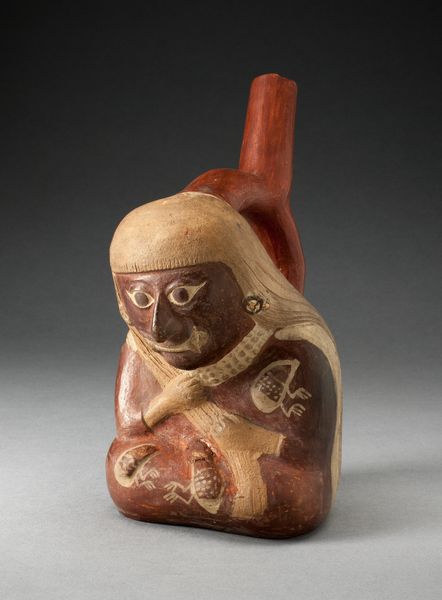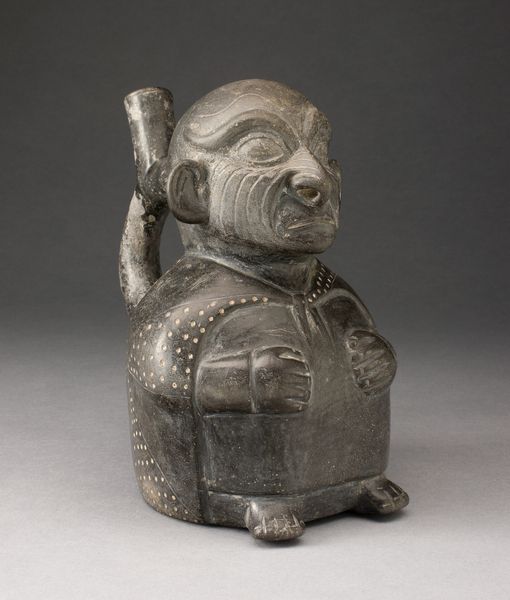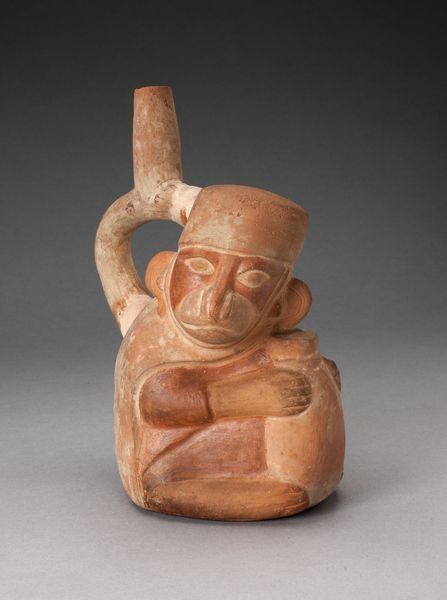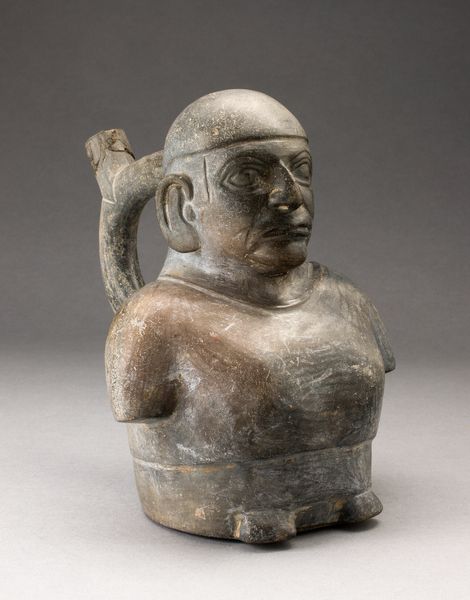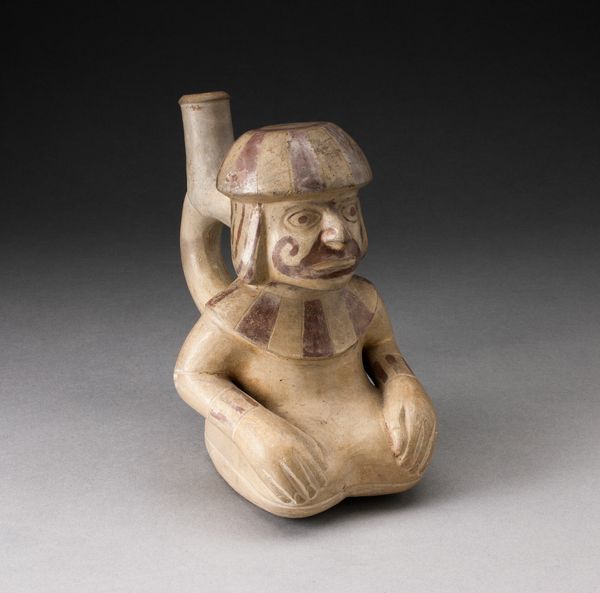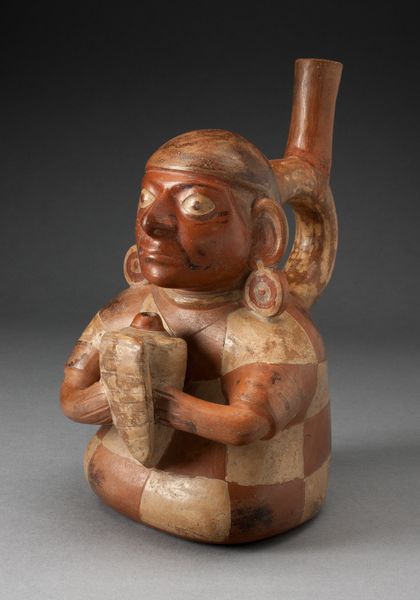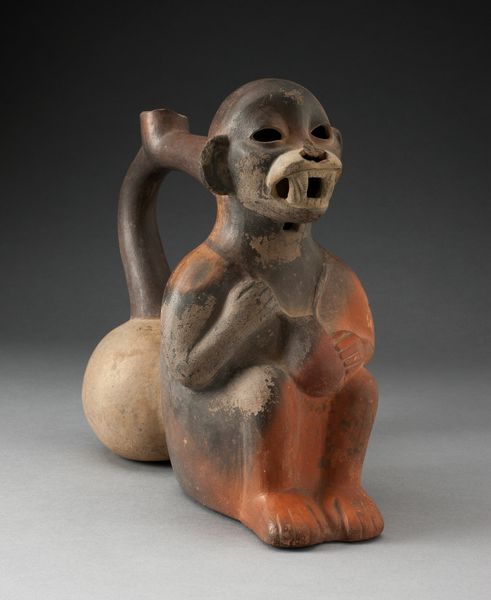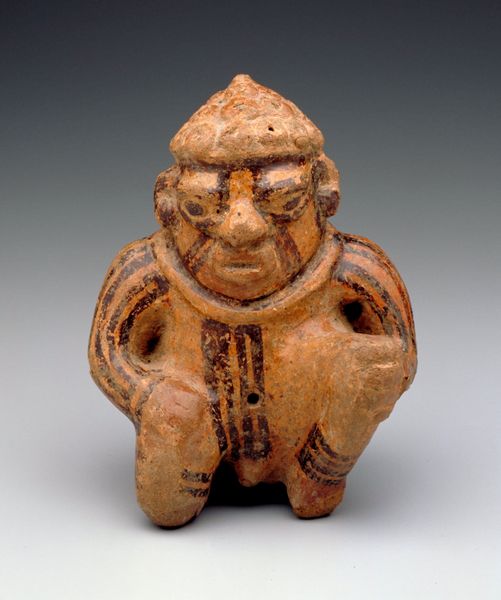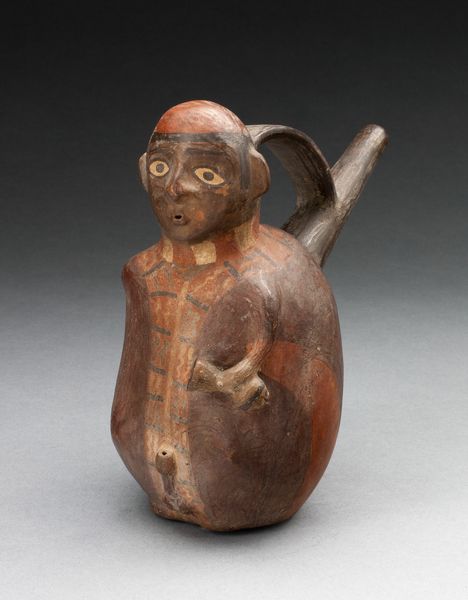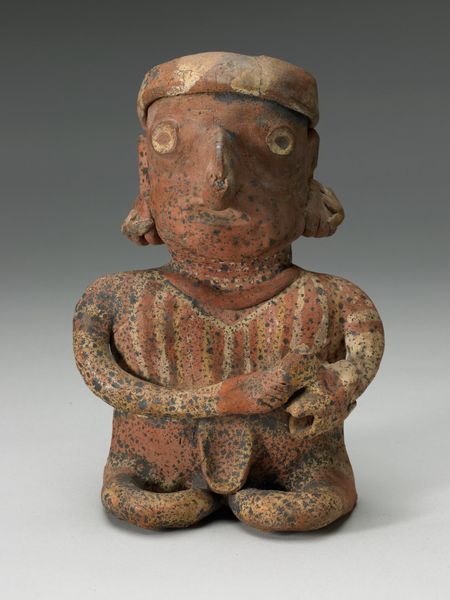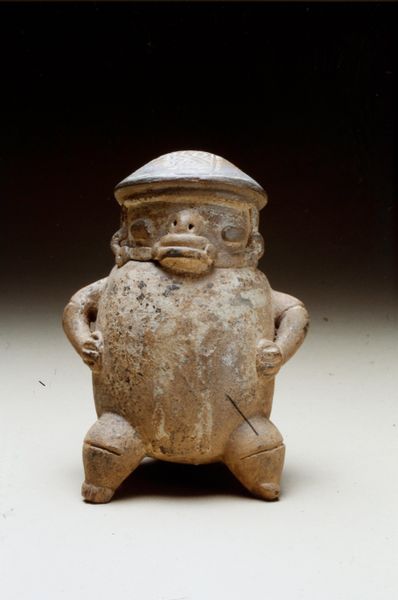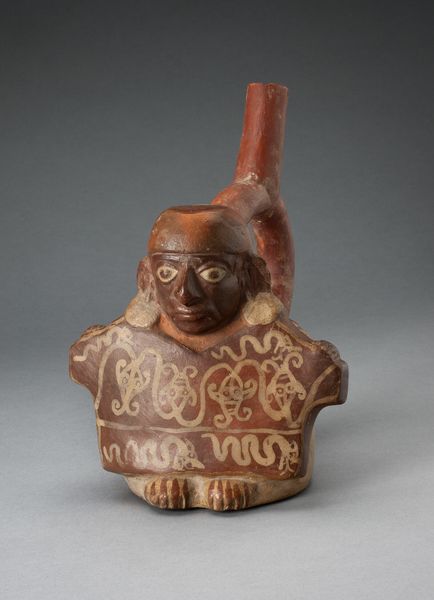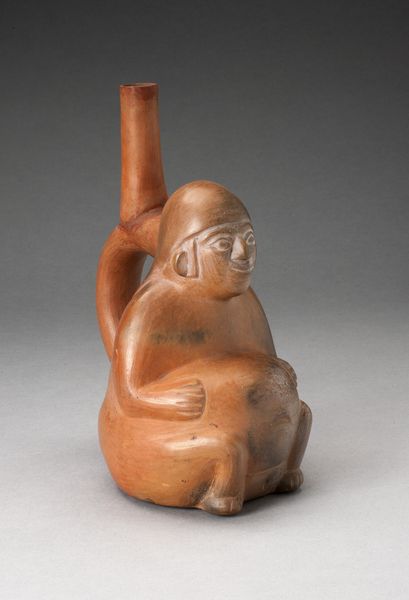
ceramic, sculpture
#
portrait
#
sculpture
#
ceramic
#
figuration
#
sculpture
#
indigenous-americas
Dimensions: Approx. h. 12.7 cm (5 in.)
Copyright: Public Domain
Curator: This is a portrait vessel of a seated official, created by the Moche culture around the year 400. It's made of ceramic and is currently held at The Art Institute of Chicago. What are your first impressions? Editor: Stark and commanding. Despite its rounded form, the figure radiates authority and self-possession. The ceramic material, with its earthy tones, lends a gravity to the piece. Curator: It’s intriguing to consider the labor involved in crafting these ceramics. Each vessel required skillful hands to mold the clay, build the form, and then fire it to perfection. There would have been very specialized workshops for this. Editor: And beyond the immediate labor, the creation of this image of power would have had sociopolitical ramifications. Who got to be immortalized this way? What does that say about social structures within Moche society? We can ask ourselves to what degree such traditions resonate in our own context. Curator: Absolutely. The uniformity of production points to a standardized aesthetic likely enforced or influenced by ruling elites. Considering the controlled access to clay resources, we begin to understand the embedded power dynamics within material constraints. Editor: Right. We must examine portraiture like this through an intersectional lens. What did gender, race, and social standing mean for the official represented? These considerations would inform our reading of his stern gaze and upright posture. It invites questions about gender roles in power within the Moche culture. Curator: Such considerations about material limitations versus skilled labor allow us insight into the division of craft in Moche society, too. There would have been strict social barriers at play in the access of resources and the subsequent means of production. Editor: It is impossible, finally, to truly know another’s interiority. Nevertheless, it provides us space to wonder what it might have meant to live in that era. These material remains can then function as launching pads for more complex and engaged investigations. Curator: This has made me want to dive more deeply into the geological realities present within the region, and how these dictated trade and the potential for further resource accumulation. Editor: Indeed. Hopefully listeners can appreciate the sculpture anew with questions like these.
Comments
No comments
Be the first to comment and join the conversation on the ultimate creative platform.
